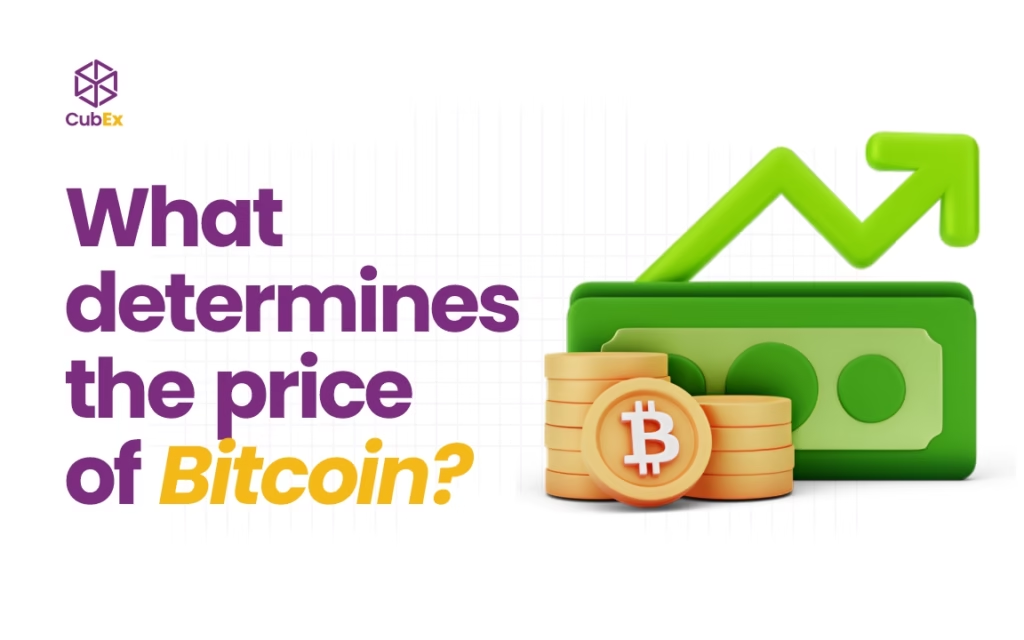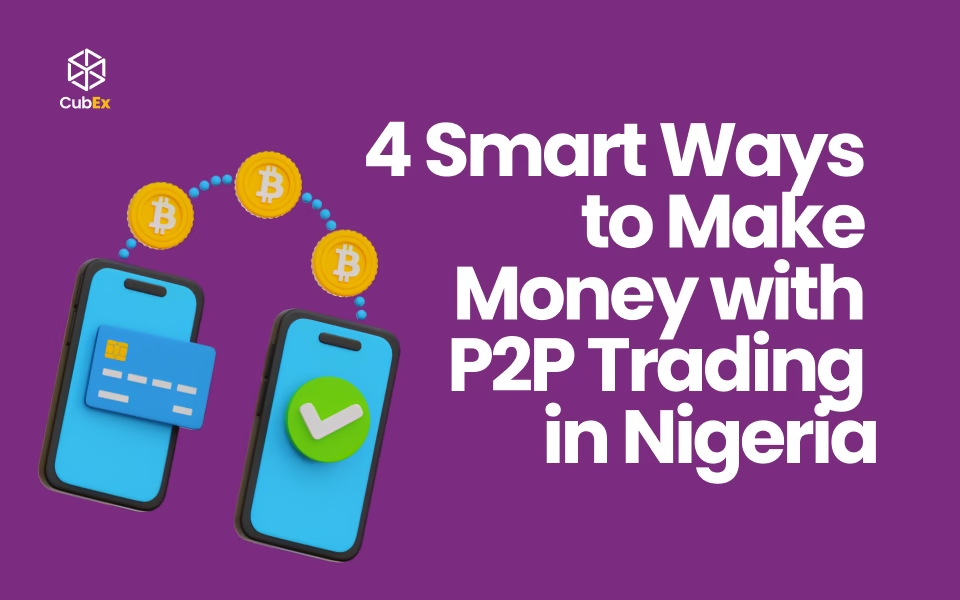
- Cryptocurrency
- By Cubex
What Determines the Price of Bitcoin?
Bitcoin, the world’s first and most well-known cryptocurrency, is famous for its dramatic price swings. But what actually drives the price of Bitcoin? Unlike traditional currencies controlled by central banks, Bitcoin operates in a decentralized market. That means its price is shaped by a combination of unique and complex factors.
Let’s explore the key elements that determine how much one Bitcoin is worth.
1. Supply and Demand
At its core, Bitcoin’s price is dictated by the basic economic principle of supply and demand.
- Limited Supply: There will only ever be 21 million Bitcoins in existence. This capped supply creates scarcity.
- Rising Demand: As more individuals, institutions, and countries adopt Bitcoin for investment or transactions, demand increases often pushing prices higher.
When demand exceeds supply, the price goes up. When demand drops, so does the price.
2. Market Sentiment and News
Bitcoin is highly reactive to news and public perception. Positive news can spark buying sprees, while negative headlines can cause panic selling.
- Bullish News: Institutional adoption (e.g., companies adding Bitcoin to balance sheets), ETF approvals, or supportive regulations can drive up prices.
- Bearish News: Government crackdowns, exchange hacks, or bans in large markets (like China) often lead to price drops.
Investor psychology plays a big role, fear and greed drive much of the market behavior.
3. Regulation and Government Policy
Since Bitcoin is decentralized, its price can be heavily influenced by how governments choose to regulate it.
- Supportive policies (like legalizing crypto in certain countries) can drive growth.
- Strict regulations or outright bans can cause uncertainty and market decline.
Bitcoin’s global nature means regulations in one country can affect prices worldwide.
4. Mining Difficulty and Halving
Bitcoin is created through a process called mining, and the reward miners receive is halved approximately every four years—a process called the halving.
- Halving Events reduce the rate at which new Bitcoins are introduced, decreasing supply and historically leading to price increases.
- Mining Costs (energy, equipment) also influence price, as miners won’t operate at a loss.
When it becomes more expensive or less rewarding to mine Bitcoin, fewer coins enter circulation affecting supply and potentially increasing price.
5. Macroeconomic Trends
Bitcoin is often called “digital gold” and is increasingly seen as a hedge against inflation and unstable fiat currencies.
- Inflation fears, currency devaluation, or geopolitical instability can push investors toward Bitcoin as a store of value.
Conversely, strong traditional markets or rising interest rates can reduce Bitcoin’s appeal, especially among institutional investors.
6. Exchange Activity and Liquidity
Where and how Bitcoin is bought or sold also affects its price.
- Liquidity: The more Bitcoin available on exchanges, the smoother price movements tend to be.
- Whales: Large holders (called whales) can impact the market by buying or selling massive amounts.
Exchange Variations: Prices may vary slightly across different exchanges due to supply/demand on each platform.
7. Speculation and Hype
A large part of Bitcoin’s price movement comes from speculation.
- Many investors buy Bitcoin not to use it, but to profit from future price increases.
- Social media hype, influencer tweets, and viral trends can cause sharp spikes or crashes.
Speculative bubbles are common in crypto, so prices can rise fast and fall just as quickly.
Conclusions
Bitcoin’s price is influenced by a web of interconnected factors from simple supply and demand to global economic shifts and internet hype. Unlike fiat currencies with central oversight, Bitcoin’s value is dynamic, driven by decentralized forces in real-time.
For new and experienced investors alike, understanding these factors is key to navigating the often-volatile world of cryptocurrency.
Related: Sell Bitcoin in Nigeria

12 Most Popular Types of Crypto Coins

